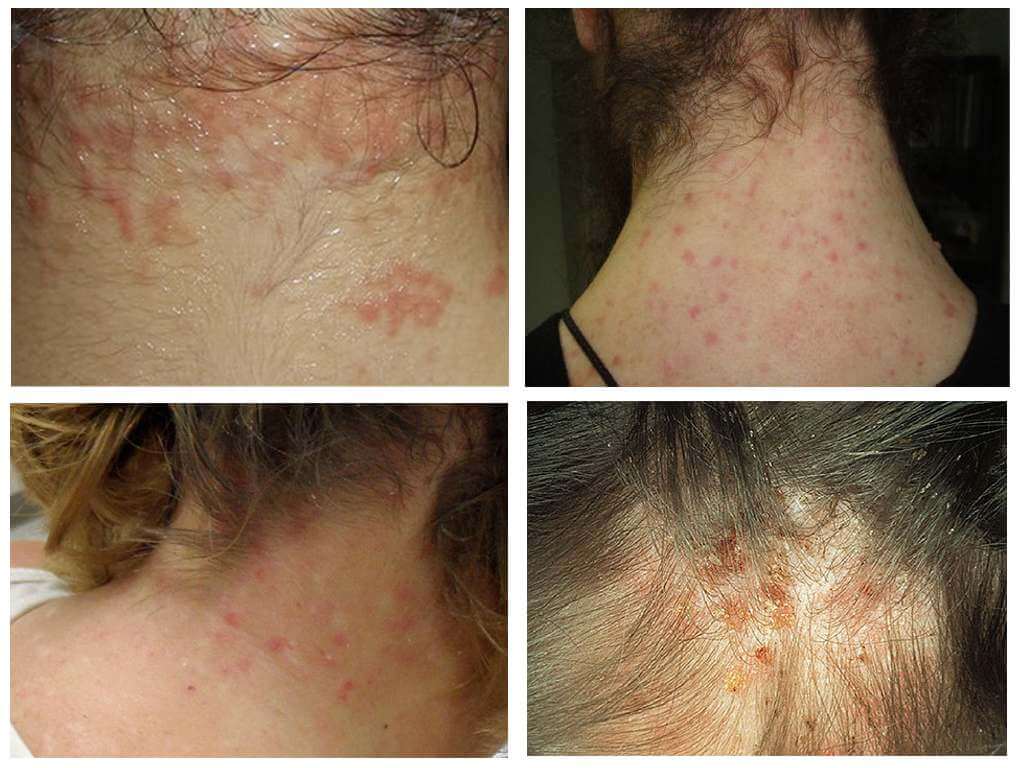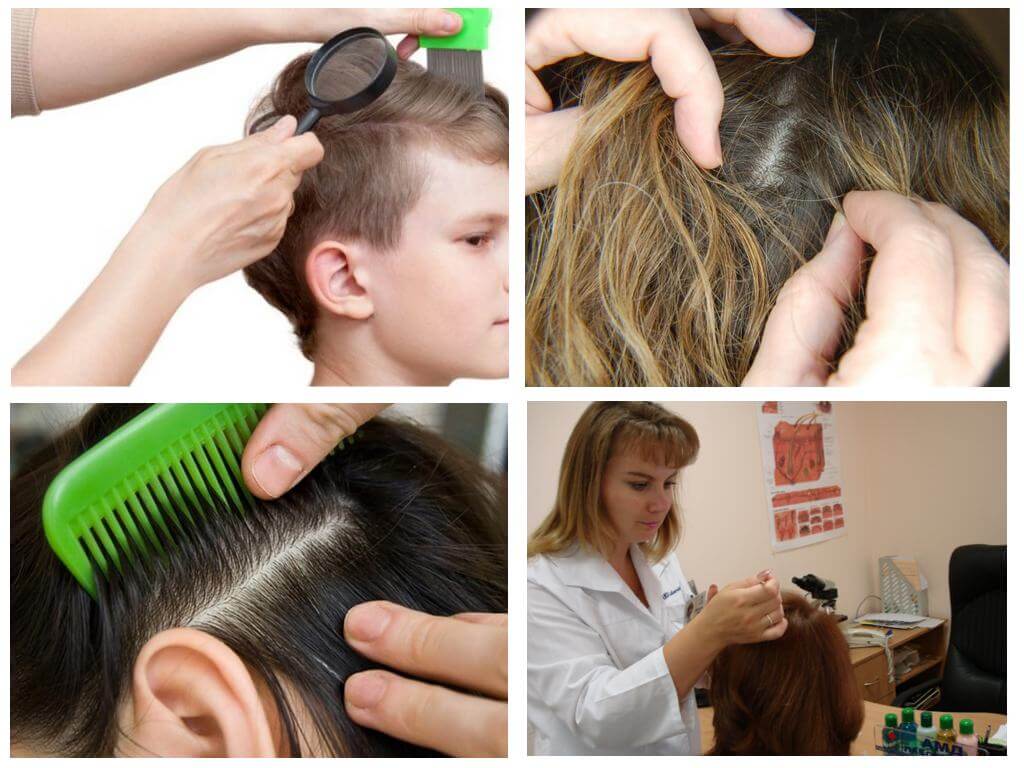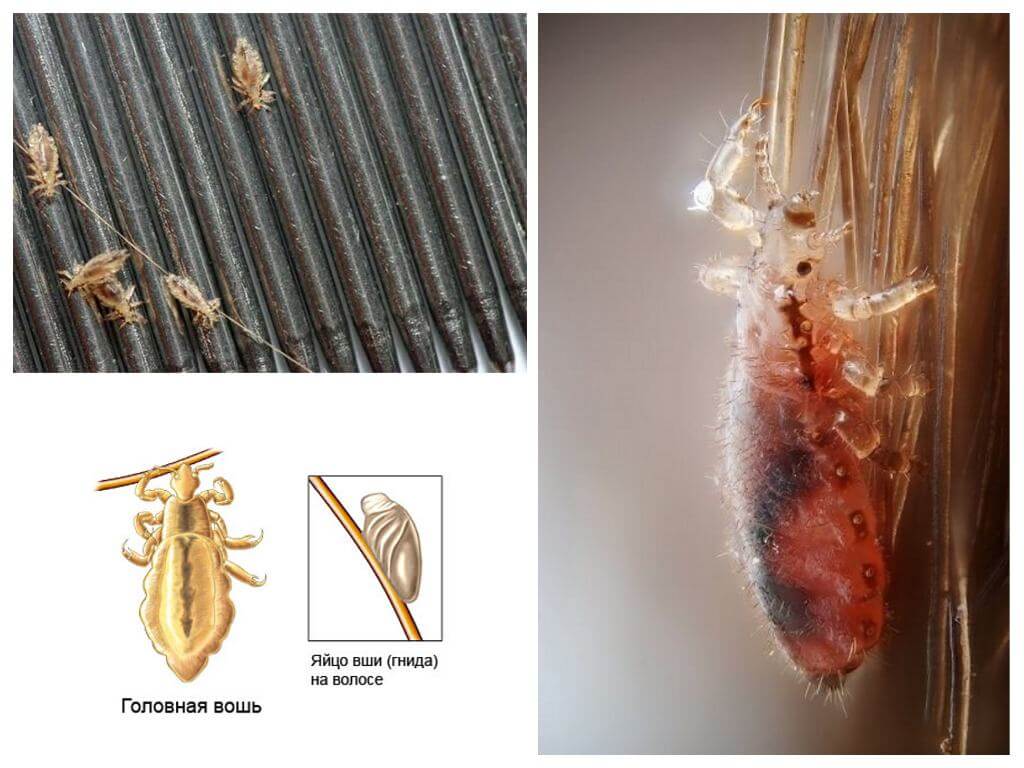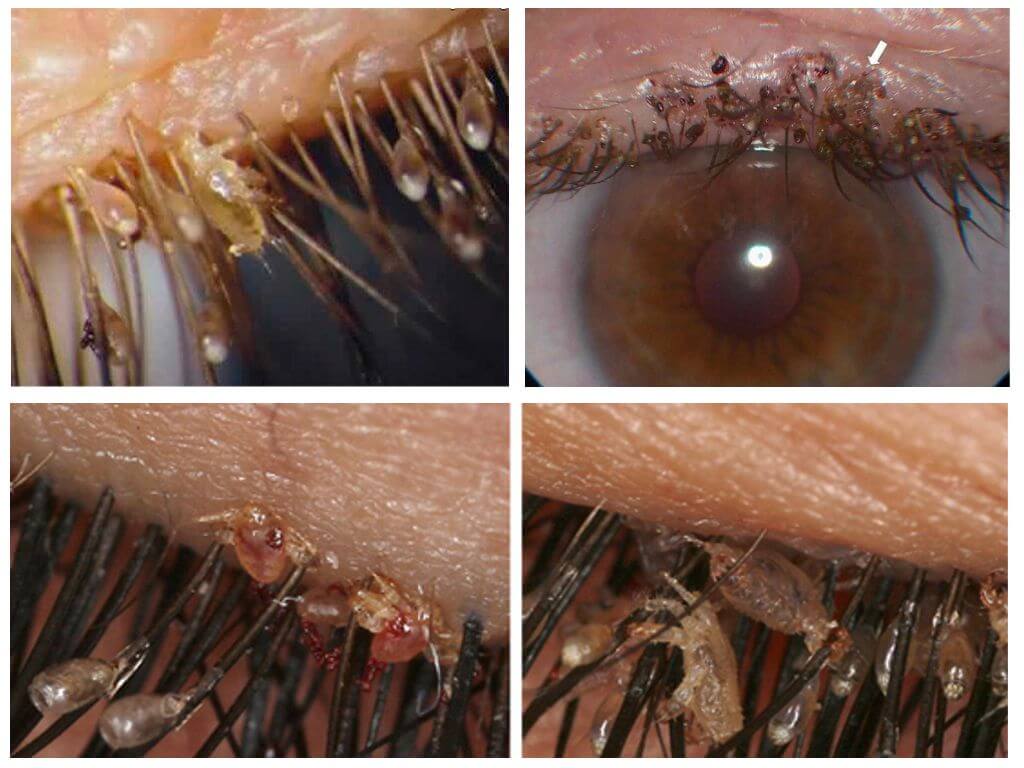- Lice and Nits
- Linen lice
- Pubic lice
- Linen lice
- Pubic lice
Pediculosis - a parasitic disease provoked by human lice. There are several varieties - head, wardrobe, pubic. The insect eats blood, lives on the skin, the patient’s personal belongings, and attaches the eggs to the hair. Children and adults are infected with lice.
Species of parasites
In nature, there are only 3 types of insects that cause pediculosis.
Head louse
Most commonly inhabited head lice, which gave the name to the variety of parasites. An insect with a body length of 3 mm lives exclusively on the head. It feeds on blood. Lays eggs - nits closer to the roots of the hair. The location of the nits can determine how long the infection has occurred. Eggs can change color depending on the tone of the hair. On bright become almost invisible. What lice and nits look like, clearly displayed in the photo.
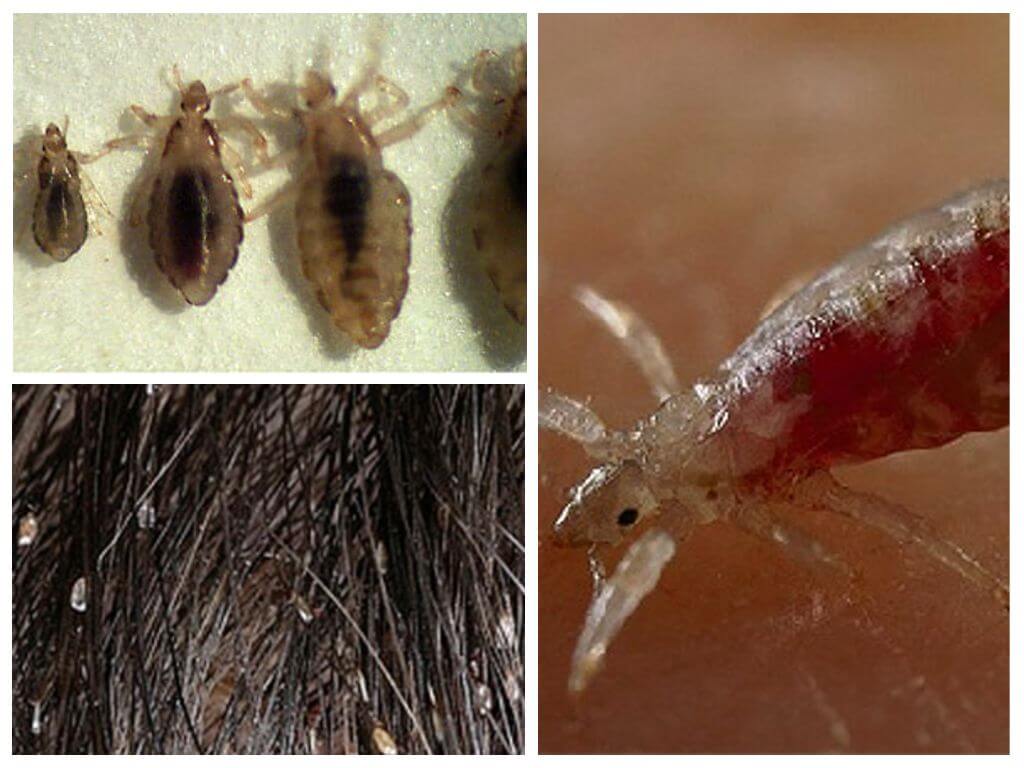
A sexually mature individual lays about 4 eggs per day. Lice Life Cycle is 30-40 days. Head lice causes severe itching, provokes scratches, abrasions, scratches. In the absence of appropriate measures, infection is introduced into the wounds. The disease becomes severe.
Wardrobe
Body louse in everyday life they call bed, linen. Outwardly, it is not much different from the head one. For a certain time, it was believed that bites appeared on the body due to severe infection with the head louse. The parasite lives in folds, seams of bedding, personal belongings. On the human body creeps to eat.

Interesting!
Unlike previous parasites, nits are not deposited on the hair. It forms peculiar nests in the patient’s bed, things.
In the way of life reminds bed bugs. If there are bites on the body, it is difficult to determine which of the bloodsuckers did this.
Pubic

An insect with a body length of up to 2 mm is more like a small crab. It settles mainly in the pubic part of the patient, lays eggs on the hair. With severe infection, it occurs under the armpits, on eyebrows and eyelashes, stomach, legs. On the head pubic louse it does not climb for two reasons - the structure of the hair does not fit, it is difficult to get to blood vessels.
Interesting!
The parasite is practically compared to the skin, is clawed by claws, and becomes invisible. Initially, it resembles an accidentally hit speck that is difficult to tear from the skin. Nits less than 1 mm in size cannot be seen with the naked eye.
Routes of pediculosis transmission
The disease, regardless of the type of lice, is transmitted from a sick person to a healthy one in three ways:
- in close contact;
- through personal items;
- on water.
Being at a distance of 50 cm from the patient is safe. There is no danger of shaking hands. Contrary to popular belief, pediculosis does not infect animals. For this reason, pets cannot become a source of illness. However, animals have their own kind of parasites - beetle eaters, which are often confused with lice.
Head lice infestation
Mankind knows several ways to get lice.
- Touching your hair to the patient’s head. This transmission method is the main one. Adults can become infected by the baby.In order for the insect to move to another place of residence, you need at least to stay in close contact for 10 minutes. In most cases, the transmission of parasites occurs between close people, lovers, friends. When lying on a bed, sofa, long hugs, kisses.
- Infection with lice through things - a hat, comb, accessories, towel. This way more often become infected with pediculosis in kindergartenschool team. There is an exchange of things between girlfriends, classmates. You can catch lice through someone else's towel.
- Adults in most cases become infected through bedding. Lice can fall on a pillow, exist for more than 1 day without food. An infectious bed causes pediculosis.
- Least of all is an infectious process through water in pools, enclosed bodies of water. Provided that there will be no rubber cap on the head. From the hair, the insect enters the water. Able to swim for about 2 days. If at this time she has access to human hair, the parasite will certainly take advantage of the moment.
In order not to become infected with lice, you must adhere to the basic rules - use only your things, go to bed with new, washed accessories, keep a distance. Periodically check the head for insects, use lice prophylaxis. Baby can get infected at school, kindergarten, public institutions. When symptoms of lice should start immediately pediculosis treatment.
Infection with clothes lice
Lice is in the patient’s things, which he often wears, in bedding. To get lice from another person, it is enough to put on his thing, hang it next to him or spend the night in the patient’s bed.

Finding body lice is a lot harder. At the slightest opportunity, she settles in the folds of bedding, gets out to eat from there. This happens at night, when a person is sleeping. Louse bite imperceptible if parasites are still few. After 2 weeks, the first representatives of the new generation will appear. As long as a person notices a problem, parasites will be a whole population. Clothing becomes infected that often worn by the patient. To get rid of bed lice, you should handle things at high temperatures or through insecticides, pay attention to hygiene.
Pubic lice infestation
At risk are those who lead a depraved lifestyle, sexually active adolescents, children in dysfunctional families.
- The main way is intimacy. You can get lice by contact of hair. If the pubis is shaved, infection will not occur.
- The second way of pediculosis transmission is personal things. Underwear, towels. So the child becomes infected from his parents. Outside a person, pubic louse can exist for about 5 days.
- Lice swim well on the surface of the water. They live in a liquid environment for about 7 days. You can pick up lice in a closed pond, pool.
It is easier to cure pubic pediculosis than other types - just shave off your hair, apply a special tool, follow the instructions. After 14 days, the treatment is fixed.

Lice development
Incubation period is 7-14 days. During this time, the female lays eggs 4 pieces a day. Nits are attached to the hair with a sticky substance, are not washed off with water, detergents, and are not combed out with ordinary hairbrushes. Are nits contagious? Not! They are not able to detach themselves from the hair.
The larva looks like an adult, begins to feed, barely born. In a week, 3 stages of maturation pass, during which the individual molts three times. At the last stage, the formation of genital organs is completed. Right after molting begins breeding process.
You can notice lice when a new generation of lice appears. At lice bites saliva is released, which dilutes the blood.With the accumulation of a certain amount, an allergic reaction occurs. Severe itching appears. Adult insects concentrate in the temporal part, on the back of the head, on the forehead.
Interesting!
Unpleasant sensations increase in the evening. With the onset of darkness, parasites begin to become active. When infected with body lice, a person notices itchy bites on the body in the morning.
In connection with the fashion for intimate hairstyles with a minimum amount of hair, pubic lice in humans gradually fade into the past. Body lice are found in people with no fixed abode, in dysfunctional families. Head lice infect everyone, regardless of social status or status. It is a common dangerous disease. Pediculosis Therapy sold in pharmacies, prepared independently.





